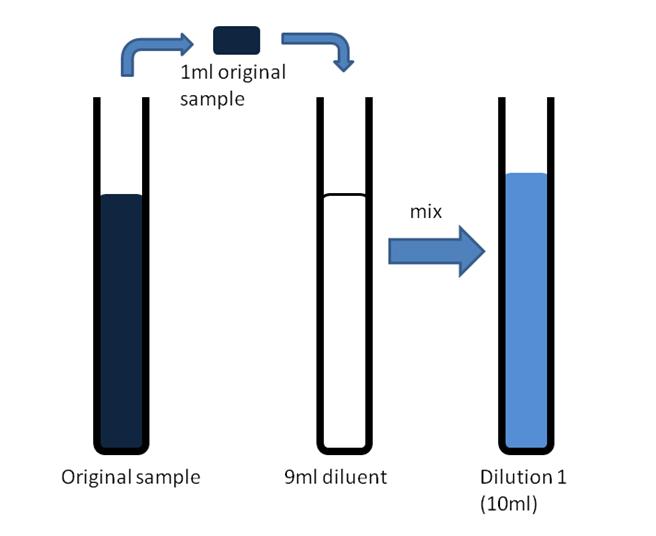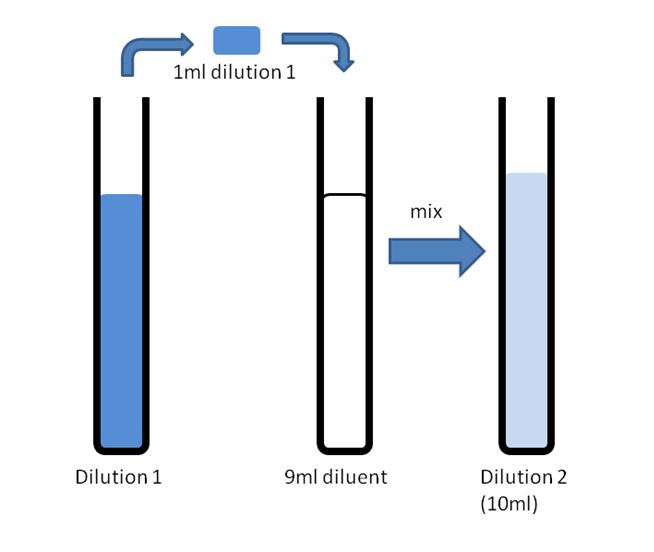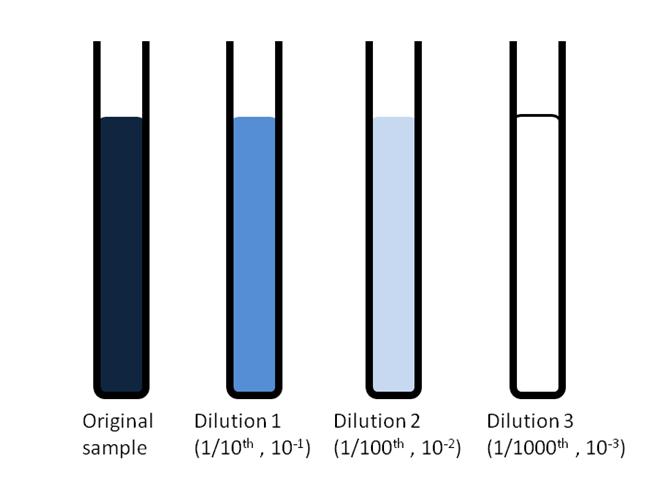

|
Microbial Growth Website |
|
IBERS: Institute of Biological, Environmental and Rural Sciences |



|
Dilution Series |
|
Use your browsers previous page button to return to the Plate Counting page. Figure 1a: Diluting the original sample. 1ml of the original sample is added to 9ml of sterile diluent and mixed. The new sample (dilution 1) has a cell concentration (number of cells/ml) 1/10th of the original sample (i.e. it is a 1 in 10 or 10-1 dilution). Dilution 1 contains the cells in 1ml of the original sample now spread through the 10ml of dilution 1. Thus, each 1ml of dilution 1 contains 1/10th the number of cells in each ml of the original sample. |



|
Figure 1b: Diluting dilution 1. 1ml of dilution 1 is added to 9ml of diluent to make dilution 2. Dilution 2 has a cell concentration 1/10th of that of dilution 1 and so has a cell concentration of 1/100th that of the original sample. Dilution 2 is a 1 in 100 or 10-2 dilution of the original sample.
|
|
Figure 1c: The dilution process is repeated until we have a series of dilutions of the original sample. |
|
Use your browsers previous page button to return to the Plate Counting page. |